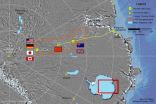(Press-News.org) STANFORD, Calif. — Neurons have been derived from the skin of a woman with a genetic form of Parkinson's disease and have been shown to replicate some key features of the condition in a dish, say researchers at the Stanford University School of Medicine. The scientists hope to use the neurons to learn more about the disorder and to test possible treatments. Such a tool is critical because there are no good animal models for Parkinson's disease. It also validates the use of induced pluripotent stem cells, or iPS cells, to model various diseases.
"Now that we can see that these neurons exhibit some of the earliest signs of the disorder, we can begin to develop methods to screen for factors that might protect them," said Renee Reijo Pera, PhD, director of Stanford's Center for Human Embryonic Stem Cell Research and Education and co-senior author of the research, which will appear in the March issue of Cell Stem Cell.
The iPS cells are created by transforming skin or other specialized cells to look and act like embryonic stem cells. Many scientists and policy-makers have hoped that these cells, which can be created without the use of human embryos, could stand in for their more ethically fraught counterparts.
Recent research from Stanford and elsewhere, however, has begun to identify significant differences between the two classes of stem cells that call into question the ability of iPS cells to completely replace embryonic stem cells. Instead many researchers feel that the true strength of iPS cells may lie in their ability to create disease-specific cell lines for study from patients with a variety of disorders — something that would be difficult to do with embryonic stem cells.
Associate professor of neurosurgery Theo Palmer, PhD, is the other senior author of this new paper; the research was conducted in the labs of both Palmer and Reijo Pera, who is also a professor of obstetrics & gynecology. Ha Nam Nguyen, a former research associate now at John's Hopkins, along with graduate students Blake Byers and Branden Cord are joint first authors of the work.
"This is the first time that neurons from a Parkinson's disease patient have exhibited disease qualities in a petri dish," said Palmer. "And it provides hints of what to look for in patients who have different genetic mutations or where a cause has not been identified. By comparing neurons from patients with different forms of Parkinson's disease, we may find commonalities or differences that will help to optimize future treatments for each patient."
Parkinson's disease is a neurodegenerative disorder that causes the gradual loss of a certain type of neuron in the central nervous system. As the neurons are lost, the patient begins to experience the tremors, movement difficulties and rigidity that are the hallmarks of the condition. It affects about 1 percent of people over the age of 65, and about 5 percent of those over age 85. Currently there is no way to halt the progress of the disease, though some medications can help Parkinson's patients manage their symptoms for several years. Most cases of Parkinson's occur sporadically, but some (between 0.5 percent to about 8 percent) are caused by a genetic mutation.
Byers and his colleagues chose to collect skin cells from a 60-year-old woman with a genetic form of Parkinson's, reasoning that they would have better chance of replicating the signs of the disorder with her cells rather than the cells of someone with the sporadic form.
Byers coaxed the iPS cells from the patient to develop into the type of neurons that die off in Parkinson's disease. At first, the neurons looked and acted normally: They were able to generate electrical signals, they produced and secreted a messaging molecule called dopamine, and their gene expression profiles over time mimicked those of neurons created from "normal" iPS cells.
However, after about 30 to 60 days of culture, the neurons from the Parkinson's patient began to exhibit some unusual characteristics. They expressed higher levels of genes for proteins needed to deal with oxidative stress — a condition in which destructive molecules wreak havoc on DNA and proteins within a cell — and churned out elevated levels of a protein involved in abnormal clumps of protein called Lewy bodies that are found in the neurons of people with Parkinson's and Alzheimer's disorders. Oxidative stress has been previously associated with Parkinson's disease.
"We needed to stress the cells with exogenous factors to elicit a disease-related phenotype," said Byers. The upshot, the researchers concluded, is that the neurons from the Parkinson's patient seem to be replicating many of the common features of the disorder, but in a much shorter timeframe.
"Parkinson's disease takes decades to manifest itself as clinical symptoms in patients, so we were concerned about how rapidly these cells would change in culture," said Byers. "We needed to be able to identify abnormal characteristics of the cells in a reasonable timeframe, so that we could identify what pushes a Parkinson's-disease-affected neuron to degrade. As it turns out, the culture dish is a pretty stressful place for a cell to be. That environment, combined with the addition of selectively toxic chemical agents, probably accelerates the visible signs of the disorder. It's also likely that there are innate mechanisms within the body that protect against these changes and cause a more protracted disease course."
The researchers are now planning to begin testing various compounds to see if they can protect the neurons. They are also investigating whether they can see similar signs of disease in iPS-cell-derived neurons from patients with the non-genetic form of the disorder.
INFORMATION:
Additional Stanford scientists involved in the research include postdoctoral scholars Aleksandr Shcheglovitov, PhD, and Kehkooi Kee, PhD; former postdoctoral scholar James Byrne, PhD; research assistant Prachi Gujar; and associate professor of neurobiology Ricardo Dolmetsch, PhD.
The research was supported by the California Institute for Regenerative Medicine, the Blume Foundation, the Kinetics Foundation, the Parkinson's Alliance, the Stanford Institute for Stem Cell Biology and Regenerative Medicine and an anonymous donor. More information about the Institute for Stem Cell Biology and Regenerative Medicine and the Departments of Obstetrics and Gynecology, Neurosurgery and Bioengineering, in which the research was primarily conducted, is available at http://stemcell.stanford.edu, http://obgyn.stanford.edu or http://bioengineering.stanford.edu.
PRINT MEDIA CONTACT: Krista Conger at (650) 725-5371 (kristac@stanford.edu)
BROADCAST MEDIA CONTACT: M.A. Malone at (650) 723-6912 (mamalone@stanford.edu)
NOTE TO MEDIA: Stanford medical school communications is issuing another release today about a complementary study in the same issue of Cell Stem Cell
END
STANFORD, Calif. — A short-term treatment with three immune-dampening drugs allowed human embryonic stem cells to survive and thrive in mice, according to researchers at the Stanford University School of Medicine. Without such treatment, the animals' immune systems quickly hunt down and destroy the transplanted cells. The finding is important because it may allow humans to accept transplanted stem cells intended to treat disease or injury without requiring the ongoing use of powerful immunosuppressant medications.
Just as it does with transplanted organs, the human body ...
Plants are able to protect themselves from most bacteria, but some bacteria are able to breach their defences. In research to be published in Science on Friday, scientists have identified the genes used by some strains of the bacterium Pseudomonas to overwhelm defensive natural products produced by plants of the mustard family, or crucifers.
"Microbes only become pathogens when they find a way to infect a host and overwhelm the host defences," said lead author Dr Jun Fan from the John Innes Centre on the Norwich Research Park.
"Our findings answer some important questions ...
PULLMAN, Wash.—Scientific societies representing 40,000 researchers and clinicians are asking that federal regulators tap a broader range of expertise when evaluating the risks of chemicals to which Americans are being increasingly exposed.
Writing in a letter in the journal Science, eight societies from the fields of genetics, reproductive medicine, endocrinology, developmental biology and others note that some 12,000 new substances are being registered with the American Chemical Society daily. Few make it into the environment, but the top federal regulators, the U.S. ...
Scientists working in the remotest part of Antarctica have discovered that liquid water locked deep under the continent's coat of ice regularly thaws and refreezes to the bottom, creating as much as half the thickness of the ice in places, and actively modifying its structure. The finding, which turns common perceptions of glacial formation upside down, could reshape scientists' understanding of how the ice sheet expands and moves, and how it might react to warming climate, they say. The study appears in this week's early online edition of the leading journal Science; ...
Irvine, Calif. — A UC Irvine research team led by Todd C. Holmes has discovered a second form of phototransduction light sensing in cells that is derived from vitamin B2. This discovery may reveal new information about cellular processes controlled by light.
For more than 100 years, it had been believed that the phototransduction process was solely based on a chemical derived from vitamin A called retinal. Phototransduction is the conversion of light signals into electrical signals in photoreceptive neurons and underlies both image-forming and non-image-forming light ...
Fraser Yachts is delighted to announce the addition of five new vessels to their ever expanding list of luxury yachts for sale. Built in 1967 and refurbished in 2005, the largest of the new collection is M/Y Il Odyssey yacht. Hailing from the Benetti Yachts shipyard, the Il Odyssey luxury yacht is 37.8m in length and can sleep 9 guests and 6 crew members. She is currently on sale in Monaco for EUR1,950,000.
One of the youngest luxury yachts for sale is M/Y Team VIP yacht. Built in 2010, and built by Guy Couach, this mega yacht is the newest of its siblings of four. ...
COLLEGE PARK, Md. – When it comes to the federal budget, the public is on a different page than either the House of Representatives or the Obama Administration – with a different set of priorities and a greater willingness to cut spending and increase taxes – concludes a new analysis by the University of Maryland's Program for Public Consultation (PPC).
This new analysis compares the House and administration budget proposals with those produced by a representative sample of U.S. adults. These public budgets were part of an innovative study released last month.
While ...
Astronomy & Astrophysics publishes new high angular resolution observations of the giant planet orbiting the star beta Pictoris. Located at 63.4 light-years from the Sun, beta Pic is a very young star of about 12 million years old [1], which is 75% more massive than our Sun. beta Pic is well known for harboring an extended and structured circumstellar disk. It was actually the first star to have its disk directly imaged more than 25 years ago. In 2009, a giant planet was seen orbiting within the disk. With an orbital distance of 8 to 15 astronomical units (AU), beta Pictoris ...
A research team from the University of Valencia has discovered that up to 20% of spices and 26% of herbs sold in Spain are contaminated by various bacteria, reducing their quality. The study, which is the first of its kind in Spain, suggests that health and hygiene control systems should be put in place, from cultivation of these products right through to when they reach the market.
Scientists from the University of Valencia have for the first time studied the microbiological quality of 53 samples of spices and herbs such as thyme and oregano sold at Spanish markets.
The ...
New research into the neurodegenerative disease, Multiple Sclerosis (MS) offers new insight into the link between sunlight, vitamin D3, and MS risk and severity. The research, published in the European Journal of Immunology, studies the relationship between the sunlight-dependent vitamin D3 hormone, immune cells, and the risk and severity of autoimmunity in an experimental model.
Expensive first-line treatments for MS modestly reduce the frequency of autoimmune attacks but do not slow disease progression, when the patient's immune system operates against the body's own ...





